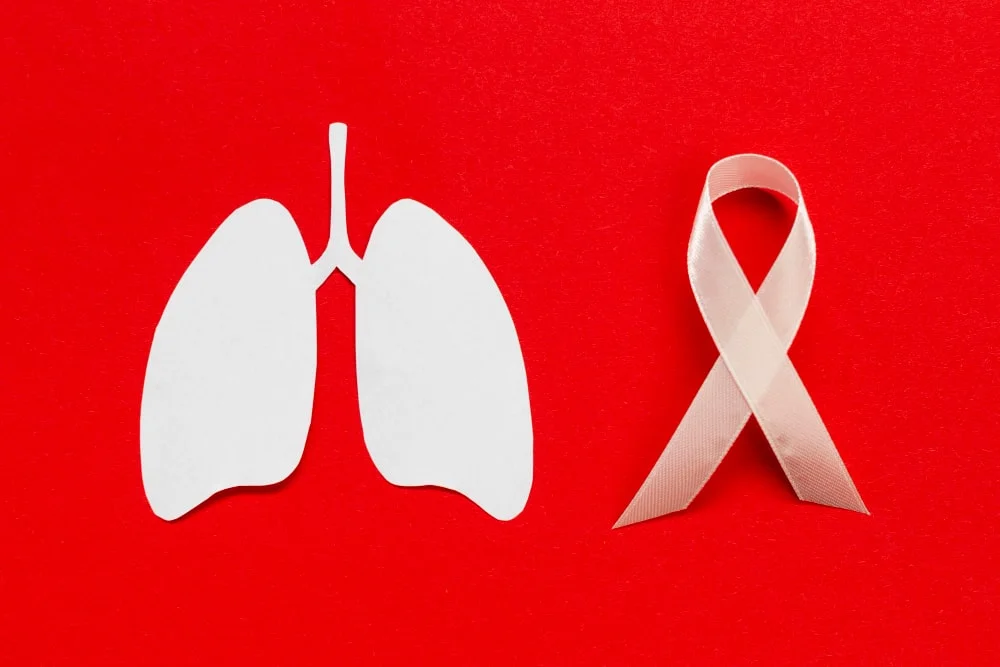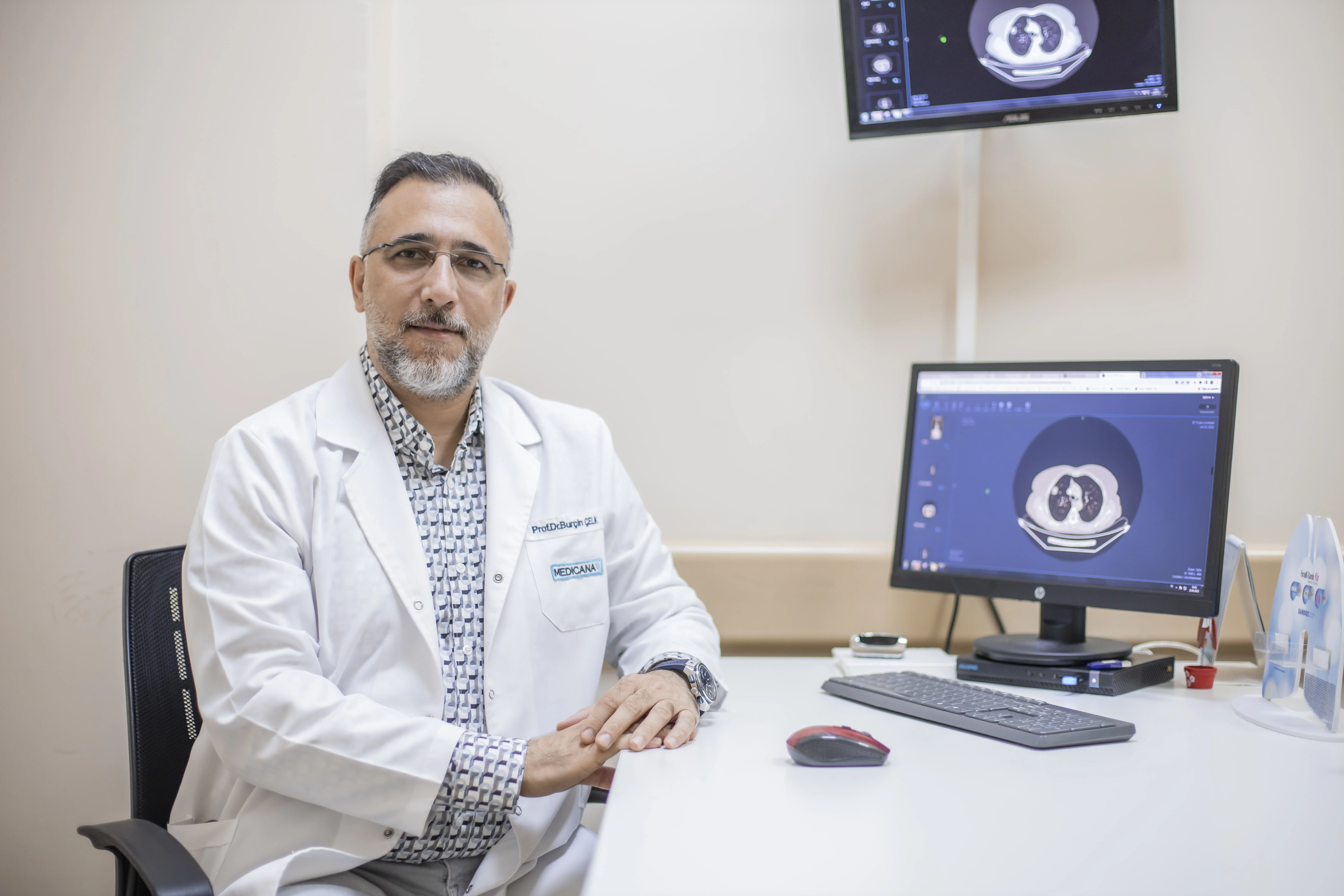Lung Cancer What is Lung Cancer?
A healthy human body is programmed to kill these cells at certain stages of the cell cycle to prevent excessive proliferation and growth. However, mutations can occur at any stage of the normal cycle program of these cells due to familial, environmental, or nutritional reasons. These mutations accumulate in cells, causing cancer (tumor). In cancer cells, the control mechanism present in healthy cells is ineffective, so cancer cells proliferate and grow uncontrollably. Lung cancer is a cancer that starts and develops in lung tissue or airways.
Epidemiology of Lung Cancer
According to World Health Organization (WHO) data, lung cancer is the most common and deadliest cancer type worldwide. It is estimated that there were nearly 2 million new cases and 1.7 million deaths worldwide in 2018. The incidence and mortality rates of lung cancer are high in developed countries, while it is lower in less developed geographical regions, including most of Central/South America and Africa. The World Health Organization predicts that global lung cancer mortality rates will rise, especially in Asia, as a result of increased global tobacco use. While the incidence of lung cancer in patients under 40 is low, it starts to gradually increase in older ages and peaks between 65-84 years. Although it is generally more common in the male population, changing lifestyle habits indicate an increased risk of lung cancer in women. According to data from the Lung Cancer Map Project, the incidence of lung cancer in our country is 75 per 100,000 in men, 10 per 100,000 in women, with approximately 30,000 new cases expected annually. In Turkey, lung cancer ranks first among men and fifth among women. However, increased tobacco use in women also increases the risk of lung cancer. In our country, the average age of lung cancer diagnosis is 63, and it is rare under the age of 40. As in the world, the risk of lung cancer in Turkey increases with tobacco use.
What are the Risk Factors for Lung Cancer?
Any reason that increases the development of cancer in a person is called a "risk factor." Having this risk factor does not mean that you will have cancer, and not having risk factors does not mean that you will not have cancer. Identified risk factors for lung cancer include tobacco and tobacco product use, passive smoking, exposure to asbestos, arsenic, chromium, beryllium, nickel, soot or tar, radon gas, a history of tuberculosis, a family history of lung cancer or other organ cancers, and high levels of air pollution.
What are the Symptoms of Lung Cancer?
The symptoms in patients diagnosed with lung cancer vary depending on the location, size, spread, and degree of spread of the tumor within the lung. Persistent cough despite treatment, recurrent pneumonia in the same area, or frequent exacerbations of chronic obstructive pulmonary disease in a smoker or former smoker are important signs. Shortness of breath and hemoptysis (presence of blood in sputum) are other important symptoms. Less common symptoms include chest pain and hoarseness. Non-specific symptoms such as weight loss, weakness, and fatigue may be seen in patients with lung cancer due to the spread of the tumor to organs outside the lung. Bone metastases associated with lung cancer are often painful; brain metastases may be asymptomatic but can present with neurological sequelae depending on size and location. Lastly, patients may present with paraneoplastic symptoms caused by substances produced directly or indirectly by the tumor.
Diagnosis of Lung Cancer
The diagnosis of lung cancer initially involves symptoms and physical examination findings. In almost half of the patients, lung cancer can be detected incidentally without any symptoms or findings. Swollen lymph nodes in the neck, cachexia, abnormal lung sounds, dullness when touching the chest, unequal pupils, drooping eyelid, weakness in one arm, dilated veins in the arms, chest or neck, and swelling of the face are findings to be noted during clinical examination.
When a physician suspects lung cancer based on the patient's symptoms and clinical examination, further tests are performed using various imaging methods. Chest X-ray, computed tomography (CT), positron emission tomography (PET-CT), bronchoscopy, and biopsy are among the primary methods used. The next step is tissue diagnosis. For this purpose, invasive diagnostic methods such as bronchoscopy, CT-guided transthoracic needle aspiration, thoracentesis (pleural fluid cytology), and biopsy with video-assisted thoracoscopic surgery are applied.
Stages of Lung Cancer
The stage of lung cancer is important for the treating physician to plan treatment and determine the course of the disease. Lung cancers are divided into two main groups based on the appearance of cells under a microscope: "small cell lung cancer" and "non-small cell lung cancer." Approximately 80% of lung cancers belong to the non-small cell group.
There are 4 stages of non-small cell lung cancer (NSCLC):
- Stage 1: The disease is limited to a small part of the lung.
- Stage 2: The disease has spread to nearby lymph nodes or just to the chest wall.
- Stage 3: The disease has spread to the space between the lungs, where the heart is located (mediastinum), or to the lymph nodes there.
- Stage 4: The disease has spread to distant organs such as the brain, liver, bones, and adrenal gland.
Small cell lung cancer (SCLC) is staged as "limited disease" and "extensive disease":
- Limited disease: The disease is found on one side of the chest, in one part of the lung, and in nearby lymph nodes.
- Extensive disease: The disease has spread to the other half of the lung or other parts of the body.
How Can Lung Cancer Be Treated?
The type and stage of lung cancer are the most important factors in determining treatment. Surgical treatment is applied in the early stages (Stage 1 and 2) and some Stage 3 patients with NSCLC, and the tumor area can be cleaned by removing a small amount of healthy tissue from the surrounding area, sometimes removing the entire lung. In general, no additional treatment is needed for Stage 1 patients where the tumor is completely removed with surgery and no diseased tissue remains in the surrounding area. After surgery, your doctor will call you for regular check-ups. In some cases (Stage 2 and 3), additional drug therapy (chemotherapy) may be applied after surgery. Sometimes, surgery can also be applied to the tumor that has shrunk with these treatments. Stage 4 NSCLC is not suitable for surgical treatment. The disease can be controlled in this stage with long-term chemotherapy, targeted therapies, or immunotherapy. These treatments can completely eliminate the tumor, extend the patient's life, and relieve symptoms.
Small cell lung cancer can progress rapidly, but it responds very well to chemotherapy and radiotherapy. Therefore, the most appropriate treatment is chemotherapy. The situation where the disease has not spread to other organs is called 'limited disease,' and adding radiotherapy to chemotherapy increases success in patients at this stage. These two treatments can be applied sequentially or simultaneously. The role of surgical treatment is very limited. In the case of extensive disease where the disease has spread to other organs, the appropriate treatment is chemotherapy. Although the tumor is very sensitive to chemotherapy, there is a high risk of cancer recurrence.
Screening and Prevention of Lung Cancer
Screening for lung cancer using chest X-rays or computed tomography or searching for cancer cells in sputum unfortunately does not reduce cancer-related deaths. Annual lung cancer screening with low-dose computed tomography can be done in people at risk. Lung cancer screening is generally recommended for people over 55 who have smoked heavily for many years.
The only proven effective way to prevent lung cancer is to combat the use of tobacco and tobacco products. Never starting smoking is the most effective method, while quitting significantly reduces the risk of developing cancer over the years. It is essential to prevent young people from starting smoking, and education on this should be provided in schools.
Prof. Dr. Burçin Çelik
Thoracic Surgery


